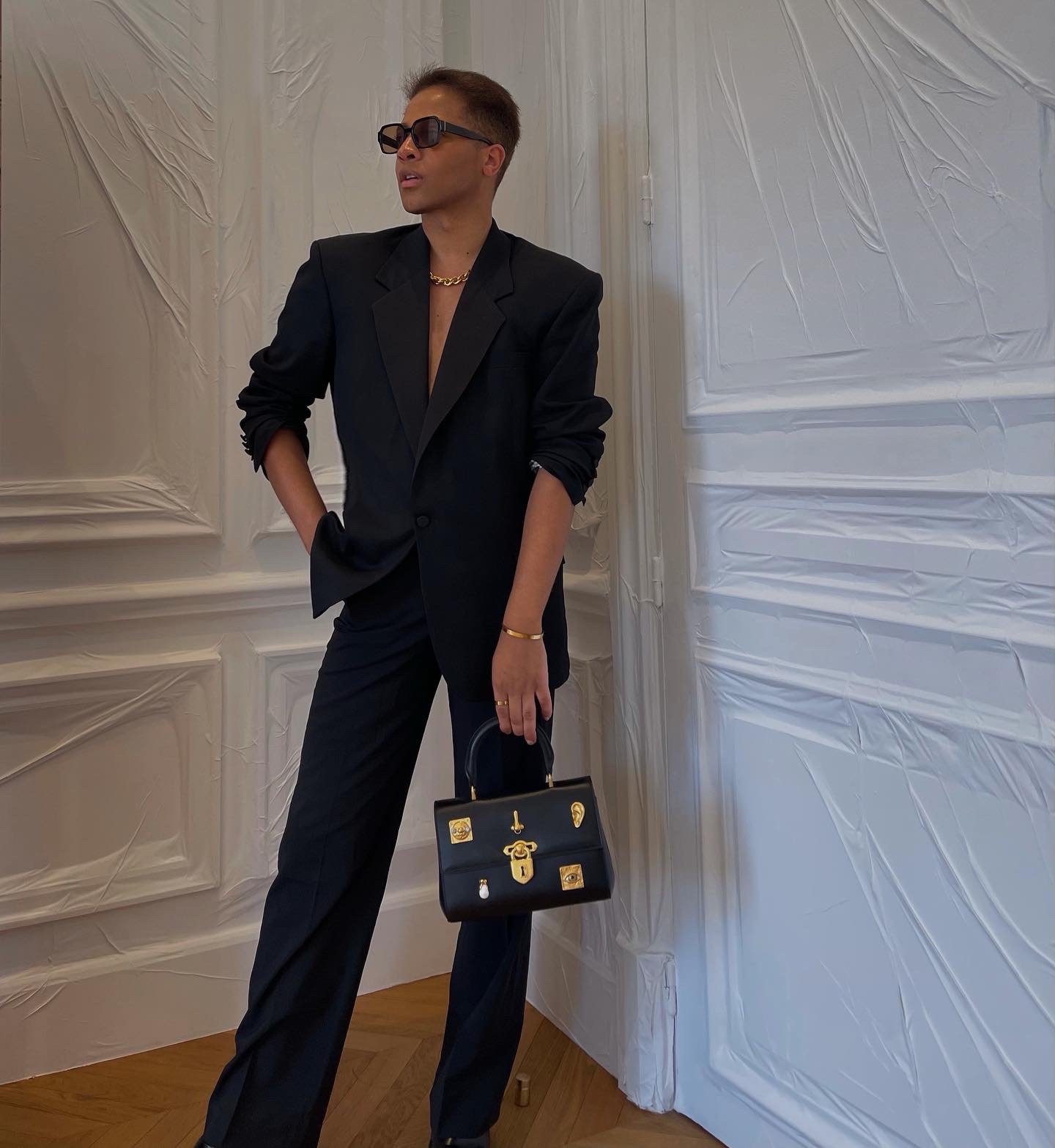
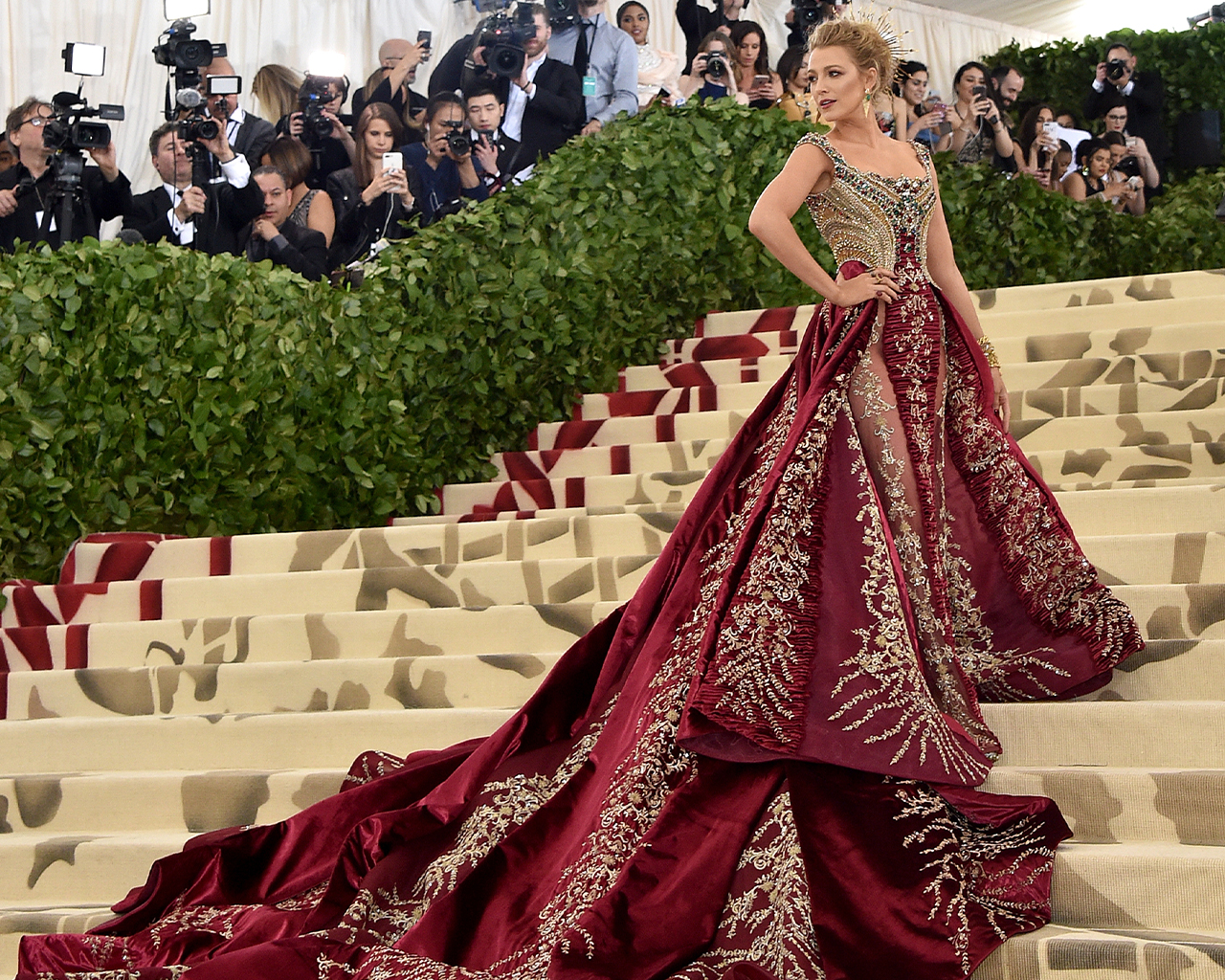
Within the fashion world, the first Monday in May is more than just a date—it’s the date of the Met Gala, one of the biggest and most celebrated events of the season. (For some, it might even loom larger than birthdays and anniversaries!) So, among the many disruptions of the last 18 months, the industry has had to accept the fact that this year, the fabulous party (and even more fabulous red carpet) will take place on the rather inauspicious date of September 13. After a hectic New York Fashion Week, those lucky enough to snag an invite will have to muster up their last reserves of style inspiration and energy to bring it to the steps of the Met.
The date isn’t the only thing that’s different this year: The institute’s exhibition, “In America,” will debut in two parts spread over roughly eight months. This month, it all kicks off with “In America: A Lexicon of Fashion,” co-chaired by Timothée Chalamet, Billie Eilish, Amanda Gorman, and Naomi Osaka. Part Two, in May 2022, will then transition into “In America: An Anthology of Fashion.” (We’ll leave it to the stylists to parse the difference between “lexicon” and “anthology” through looks.)
For the Costume Institute, the leadership said, it was essential to address the lexicon of fashion after witnessing the social justice movements of 2020. “Over the past year, largely because of the pandemic, the connections to what we wear have become more emotional,” Andrew Bolton, the Wendy Yu curator in charge of the Costume Institute said in a press release. “Part One of the exhibition will establish a modern vocabulary of American fashion based on the expressive qualities of clothing as well as its deeper associations with issues of equity, diversity, and inclusion.”
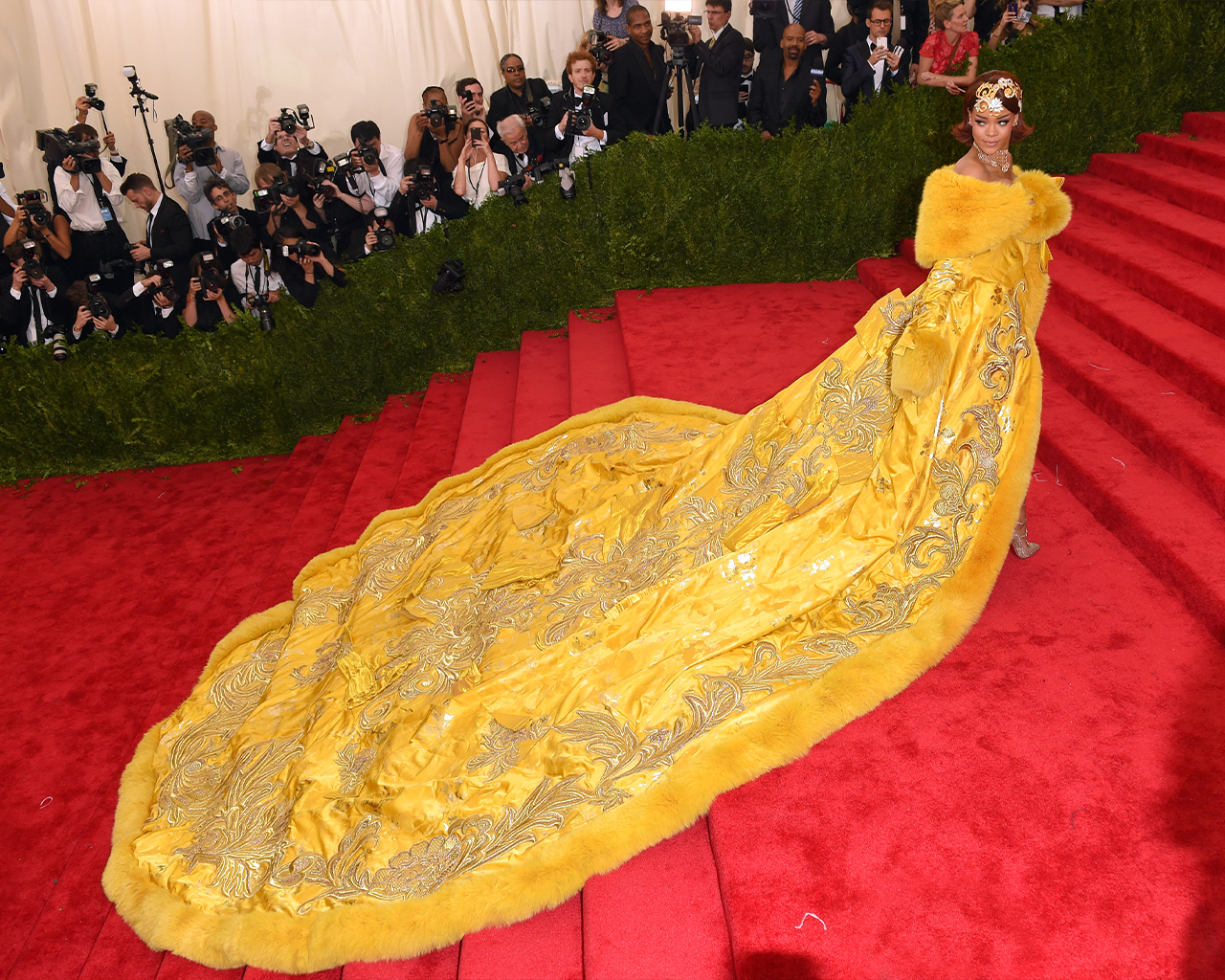
As such, the lucky A-listers (and those further down the alphabet) will have a lot more to consider in selecting their looks than what photographs best or what will earn them raves across the internet. Every year’s theme is carefully selected to tell a story about a moment in time. In 2015, for example, the gala celebrated China’s influence on Western fashion, and Rihanna understood the assignment, delivering an unforgettable Guo Pei yellow gown. This year, guests will have to ask themselves (and their stylists) precisely what it means to be American and what bonds us together, especially after a year of forced isolation and tumult.
Bolton plans to provide plenty of inspiration: Approximately 100 individual pieces pulled from archival American designers’ collections (both emerging and leading names) will be arranged and displayed in the Anna Wintour Costume Center, representing the diversity, personalities, and qualities that collectively define American fashion. Bolton also curated the 2018 exhibition, Heavenly Bodies, which attracted more than 1.65 million visitors to the Met Fifth Avenue and the Met Cloisters, making it the Met’s most visited exhibition ever so far. He also happens to have curated the other exhibitions in the Met’s top-five most popular of all time: Alexander McQueen: Savage Beauty (2011); China: Through the Looking Glass (2015); Manus x Machina: Fashion in an Age of Technology (2016); and Camp: Notes on Fashion (2019).
In short, expect to be dazzled by the combination of a Met MVP and the rich inspiration-scape that American fashion history presents.
“In looking at the past, we can consider the aesthetic and cultural impact of fashion on historical aspects of American life,” Max Hollein, the Marina Kellen French director of the Met, said in a statement.
Indeed, there’s perhaps no better way to celebrate the festive return of our favorite event than with a look back at the moments that have made it an integral part of American fashion and culture at large, starting from its humble origins in 1948, when it was established as an elaborate dinner and tickets were sold for 50 dollars each by fashion publicist Eleanor Lambert.

At the time, it was an effective way to raise money and drum up publicity for the newly founded Costume Institute. (The institute was created in 1946, when the Museum of Costume Art officially merged with the Metropolitan Museum of Art.)
What began as yet another gala on the New York social calendar, however, quickly evolved into something special thanks to—yes—the fashion.
Legendary fashion arbiter Diana Vreeland served as a special consultant at the Costume Institute from 1972 until her death in 1989 and created a memorable suite of exhibitions throughout that span, including “The World of Balenciaga” (1973), “The Glory of Russian Costume” (1976), and “Vanity Fair” (1977), galvanizing audiences and setting a high bar for costume exhibitions globally.
With such lofty expectations, gala guests delivered. For example, in 1974, Bianca Jagger stunned in a red ruby gown, and Cher effectively earned the title “Queen of the Naked Dress” in an original Bob Mackie at that year’s “Romantic and Glamorous Hollywood Design” themed gala. Three years later, Lambert managed to convince style icon and former First Lady Jackie Kennedy to serve as her co-chair, adding another dash of glamour from 1977 to 1978.
Supermodel Christy Turlington channeled Audrey Hepburn straight out of Breakfast at Tiffany’s in a minimal black gown with a stacked pearl choker at the 1992 gala, while royal style icon Princess Diana made her first Met Gala appearance in 1996 in a navy Dior slip dress paired with a sapphire necklace and earrings. Katy Perry looked heavenly in Versace angel wings in 2018 and then outdid herself with her campy crystal chandelier look the year after. Even Kim Kardashian brought Thierry Mugler out of retirement for a dripping bodycon latex dress in 2019.

That same year, Wintour tapped musical artist Lady Gaga as the “Camp: Notes on Fashion” gala co-host, along with fashion-loving musician Harry Styles. Gaga took her role seriously, with a total of four outfit changes made right on the red carpet. (Can we say iconic?) The only one to come close to matching Gaga’s entertaining arrival was actor and activist Billy Porter. The Pose star made a strong argument for stealing the whole show after being carried in on a palanquin held by six shirtless men in gold pants, as he posed on top in a 24K crown and gold angel wings—peak camp, if we do say so ourselves. Another contender was Moschino Barbie Kacey Musgraves, who threw the entire internet into a frenzy when she was dropped off at the famed Met steps in a hot pink convertible.
Also camp, to some? Wintour’s decision that year to open the door to social media influencers, including Camilla Coelho, Lilly Singh, and YouTube sensation Liza Koshy. The guest list is a hotly debated topic to this day, which begs the question: Who really decides who’s “in” and who’s “out” in any given year? No matter how some may feel about it, the role of cultural arbiter surely seems to have fallen to Wintour.
Sometimes, it’s who the guests invite themselves that makes the headlines: It’s been memorable and heartwarming to see how celebrities have used the gala as a way to make their relationships official over the years. Most notably, Gigi Hadid and Zayn Malik made their first appearance on the carpet at the 2016 gala, while Elon Musk and Grimes went public at the 2018 event. (Incidentally, both couples are still happily together, each having since welcomed little bundles of joy. Maybe it’s something in the Met Gala air?)
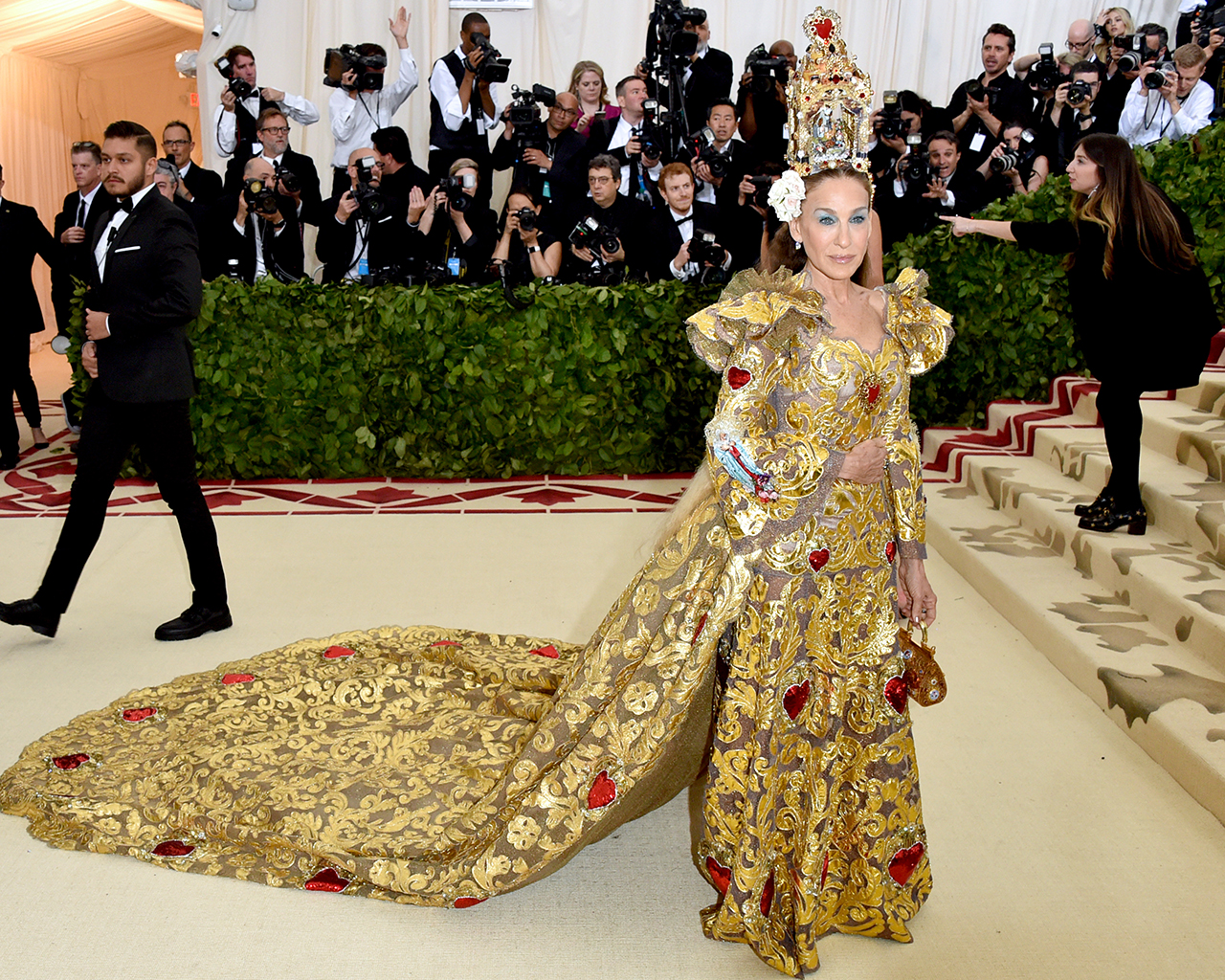
But besides their arm candy, guests also can use show-stopping accessories as a way to stand out, them from glorious headpieces (See: Diana Ross’ gigantic tulle headpiece from 2001) to trendy and statement-making bags. It feels like yesterday that Sarah Jessica Parker’s cascading red Philip Treacy headpiece from the 2015 “China: Through the Looking Glass” became the internet’s most viral meme, compared to both a Power Ranger and a character from Maleficent.
Equally memorable was Zayn’s bionic arm for the “Manus x Machina: Fashion in an Age of Technology” gala. The year before, Jaden Smith went slightly more organic, gripping his freshly cut dreads like a top-handle bag. Topping them all was Jared Leto, who took camp to the next level when he carried around a replica of his own head in 2019—a nod to the Gucci show of that year’s co-host, Alessandro Michele.
The runway to red carpet inspo goes in the other direction too, as some of the accessories donned at the Met Gala have even served as inspiration for designers: For example, the metallic turban Marc Jacobs created for supermodel Kate Moss in 2009 appeared years later in his SS18 collections.
Still, it’s not just the fashion that makes the Met matter—it’s the moments. (Even an anonymous man falling down the stairs can become iconic! Sorry, Jason Derulo.)
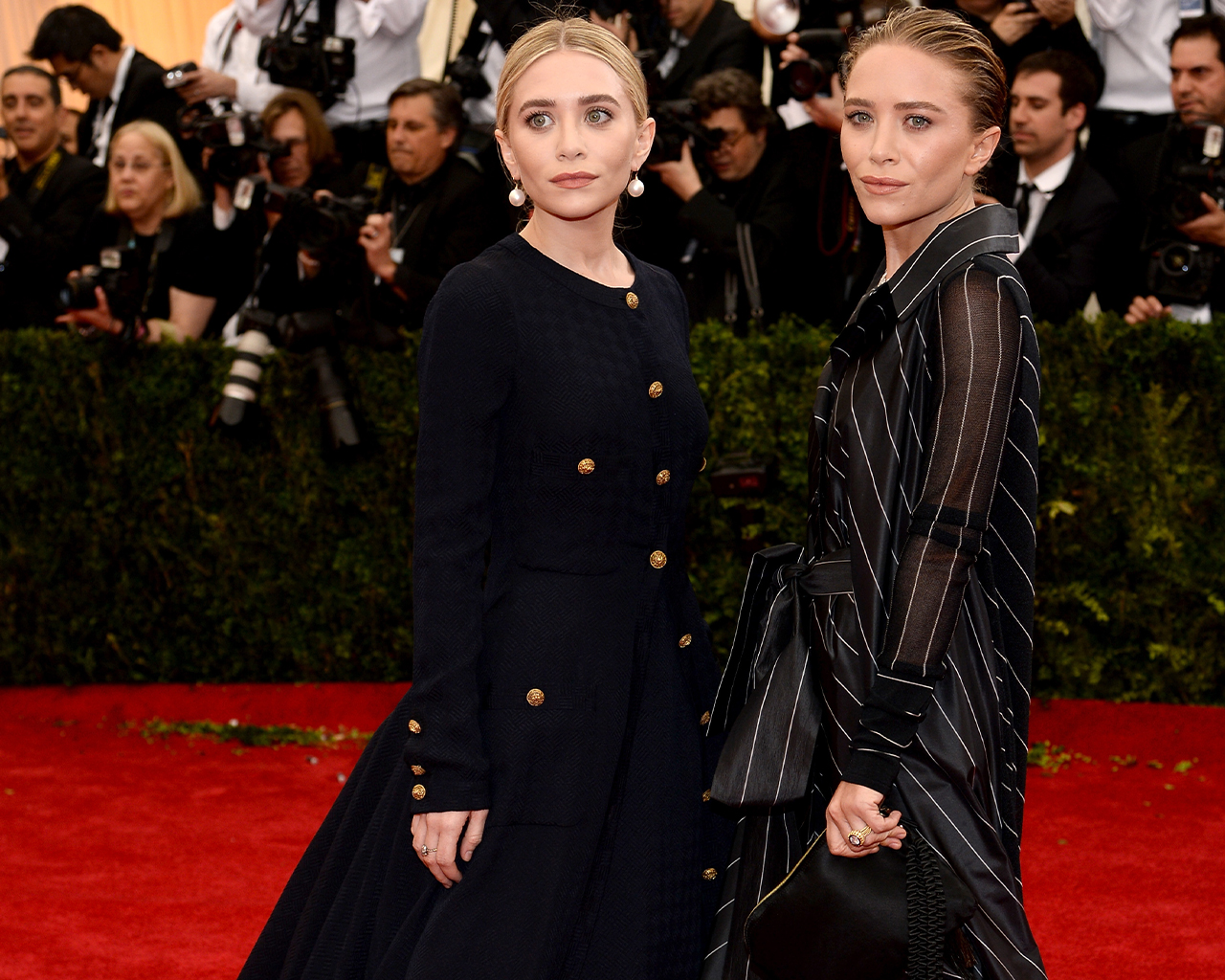
One favorite tableau? Childhood actresses Mary-Kate and Ashley Olsen made their first debut on the red carpet together in 2005 at the “House of Chanel” gala. The twin sisters—still in their New York Minute-era aesthetic—accessorized their vintage dresses with stacked necklaces, rings, and bracelets (very Y2K). Since then, their style has evolved to the now-minimalist aesthetic made famous by their brand, The Row.
Of course, there’s no style evolution more meaningful to the Met than Anna Wintour’s. From 1995 to today—excluding the years 1996 and 1998, when the gala was chaired by Harper’s Bazaar EIC Liz Tilberis—the editor in chief of American Vogue and artistic director and global content adviser of Condé Nast has served as co-chair of the Met Gala. Wintour is credited with transforming the gala from its intimate dinner origins to elevating it to one of the industry’s most visible and successful charity events—one where individual tickets cost $35,000 and tables sell for up to $300,000. (If you can even snag an invite, that is.) Wintour’s exclusive and eclectic guest list has included names from the worlds of fashion, film, society, sports, business, and music; she was the first to extend an invite to supermodels in their own right, rather than just inviting them as plus-ones of legendary designers. In 1995, the strategy paid off when the supermodel trifecta of Kate Moss, Naomi Campbell, and Christy Turlington turned out on the red carpet, creating a memorable scene in honor of their returns to the runway.
Now that it’s time for the gala to make its own return, we can only speculate at the high-fashion drama in the making. Maybe Rihanna will hop back up on the table to perform “Bitch Better Have My Money” as she did in 2015? Can we hope for some dubious yet very chic bathroom selfies? If not, at the very least, let’s hope for another epic photobomb moment. (Yes, we’re talking about you, Jennifer Lawrence.) We’re most definitely waiting to see pregnant Kylie Jenner’s sure-to-be-glam baby bump. Maybe she’ll even pull some inspiration from sister Kim’s notorious 2013 Met maternity look. (Or maybe not, considering the floral Givenchy was unfavorable compared to a couch.)
One thing’s for certain: With the official dress code of American independence, American designers will have a major moment on their home turf. Expect a special focus on the class of emerging, talented, diverse, and inclusive designers. We’re predicting a few stunning Christopher John Roger custom gowns will make a red carpet appearance after the successful year he’s had, and we’re hoping to see some strong tailoring and suiting from Peter Do. Pyer Moss founder and creative director Kerby Jean-Raymond, the first Black designer to present during the official Paris Haute Couture calendar, is another one to watch. And, of course, we’re expecting a Telfar bag appearance. (Queen Bey, are you going to take this one?)
The countdown is on.








